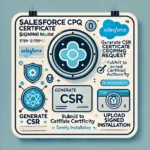Salesforce stands out as a leader, offering a suite of tools to streamline sales, marketing, and customer service processes. One such tool is Salesforce Surveys, which empowers organizations to gather valuable feedback from customers and stakeholders. In this comprehensive guide, we’ll explore the intricacies of Salesforce Surveys, including its features, use cases, best practices, and how to leverage it effectively to enhance customer satisfaction and drive business growth.
Overview:
Salesforce Surveys:
- Integrated survey tool within the Salesforce platform
- Enables organizations to create, distribute, and analyze surveys seamlessly
- Offers customizable survey templates, branding options, and reporting capabilities
- Helps organizations gain insights into customer preferences, satisfaction levels, and areas for improvement
Features and Benefits:
- Customizable Surveys: Salesforce Surveys allows users to create customized surveys tailored to their specific needs, with options to add various question types, branding elements, and conditional logic.
- Multi-Channel Distribution: Surveys can be distributed through multiple channels, including email, web forms, and social media, making it easy to reach customers wherever they are.
- Real-Time Reporting: Salesforce Surveys provides real-time reporting and analytics, allowing organizations to track responses, analyze trends, and identify actionable insights promptly.
- Integration with Salesforce Data: Surveys seamlessly integrate with Salesforce CRM data, enabling organizations to correlate survey responses with customer records and other relevant data points.
Use Cases of salesforce survey
- Customer Feedback: Organizations can use Salesforce Surveys to gather feedback from customers at various touchpoints, such as after a purchase, service interaction, or event attendance, to gauge satisfaction levels and identify areas for improvement.
- Employee Engagement: Salesforce Surveys can be used internally to collect feedback from employees on topics such as training programs, company culture, and job satisfaction, helping organizations enhance employee engagement and retention.
- Product Feedback: Surveys can be used to collect feedback from customers on product features, usability, and overall satisfaction, informing product development decisions and driving innovation.
- Event Feedback: Organizations can create surveys to collect feedback from attendees after events, conferences, or webinars, allowing them to evaluate the success of the event and make improvements for future iterations.
Best Practices of salesforce survey
- Define Survey Objectives: Clearly define the objectives of the survey and the specific insights you hope to gain before creating the survey questions and distributing it to respondents.
- Keep Surveys Short and Relevant: Keep surveys concise and focused to maximize response rates and minimize respondent fatigue. Avoid asking unnecessary or irrelevant questions.
- Personalize Survey Invitations: Personalize survey invitations with the recipient’s name and context-specific messaging to increase engagement and response rates.
- Follow Up on Feedback: Act on survey feedback promptly by addressing issues raised by respondents, communicating changes or improvements made based on feedback, and closing the loop with respondents.
How to create survey in salesforce
To create a survey in Salesforce, follow these steps:
- Navigate to Surveys: In Salesforce, go to the App Launcher (grid icon) and search for “Surveys.” Click on the Surveys app.
- Create a New Survey: Click on the “New Survey” button.
- Define Survey Properties: Fill in the details for your survey, including Name, Description, and Folder (where the survey will be stored).
- Add Questions: Click on the “Add Question” button to start adding questions to your survey. Choose the question type (e.g., Multiple Choice, Rating Scale, Text) and enter the question and answer options.
- Configure Question Properties: Customize the question properties, such as whether the question is required, the maximum number of characters for text responses, and any conditional logic.
- Preview and Test: Once you’ve added all your questions, click on the “Preview” button to see how your survey will appear to respondents. You can also test the survey to ensure it functions correctly.
- Activate the Survey: Once you’re satisfied with your survey, click on the “Activate” button to make it available for distribution.
- Distribute the Survey: After activating the survey, you can distribute it to respondents via email, a public link, or embed it on a website. You can also distribute surveys through Salesforce communities or marketing campaigns.
- Monitor Responses: Monitor responses to your survey in Salesforce. You can view response data in real-time and generate reports to analyze survey results.
By following these steps, you can create a survey in Salesforce to gather valuable feedback from customers, employees, or stakeholders, helping you make informed business decisions and improve engagement.
External Resource:
Frequently Asked Questions (FAQs):
How can I create a survey in Salesforce?
You can create a survey in Salesforce by navigating to the Surveys tab in Salesforce Setup, clicking on “New Survey,” and following the prompts to define survey properties, questions, and distribution options.
Can I customize the branding of my surveys in Salesforce?
Yes, Salesforce Surveys allows you to customize the branding of your surveys by adding your organization’s logo, colors, and fonts to maintain brand consistency.
Is Salesforce Surveys available in all Salesforce editions?
Salesforce Surveys is available in select Salesforce editions, including Enterprise, Unlimited, and Performance editions. It may require additional licensing or configuration depending on your organization’s needs.
How can I analyze survey responses in Salesforce?
You can analyze survey responses in Salesforce by accessing the survey’s response dashboard, which provides real-time reporting and analytics on response rates, trends, and insights. You can also export survey data for further analysis using external tools or reporting platforms.
Conclusion:
Salesforce Surveys is a powerful tool that enables organizations to gather valuable feedback from customers, employees, and stakeholders to drive informed business decisions and enhance customer satisfaction. By leveraging its features, best practices, and integration with Salesforce CRM data, organizations can gain actionable insights, improve engagement, and ultimately achieve their business objectives effectively.


